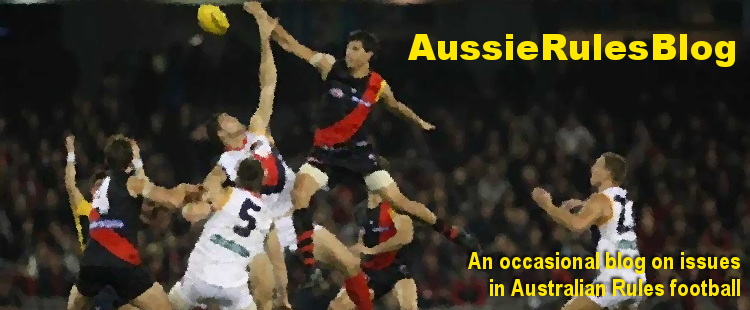As a season that has been traumatic for a Bombers fan draws to a close, AussieRulesBlog maintained our recent policy of tuning in to the Brownlow Medal count once around mid-way, and then again at the conclusion.
We joined midway through the round 23 count, just in time to see Dane Swan, and then Joel Selwood, relegated to the minor placings when the last best-on-ground vote of the season was awarded to Gary Ablett.
A quick glance at the results for round 23 shows that the Barcodes played the Kangaroos on Sunday afternoon in the second-last game of the home and away rounds. But this was the third-last game read out by Vlad and Dane Swan was eliminated as a winning chance.
Geelong played the Lions in the third game of the round, on Saturday afternoon, but Vlad read these votes out second-last. Selwood retained a two-vote lead over Ablett at this point.
The Suns played the Giants in the third-last game of the round, early Sunday afternoon, but these were the last votes read out. Ablett, with a best-on-ground, is awarded the Brownlow Medal by a margin of one vote.
There’s no doubt this was great theatre, but there are some troubling aspects.
Traditionally, Brownlow Medal votes were cast by the umpires and the sealed envelopes stored under security until the night of the count. The votes were read out in the order they were cast. Had this practice been followed, Ablett would have been the winner after the votes for the second last game — Barcodes v Kangaroos — were read out.
For the AFL to know to read out the votes in the order they did — and with Vlad’s pathetic impression of commercial television’s tension-building pause — one of two things had to happen.
The first, and most troubling, possibility is that all the votes had been tallied in full before the televised count. Call us conspiracy theorists — and we’ve got plenty of evidence from this year — but this scenario allows the possibility for the voting and the count to be altered to suit the AFL’s agenda.
The second possibility is that someone has done a very fast scan of the votes in the break between the last and second-last rounds and determined the order of games for maximum theatrical effect. Not as troubling, but too much theatre and not enough tradition and (relative) transparency.
It’s an important award. Too important to be sullied by a confected count.



